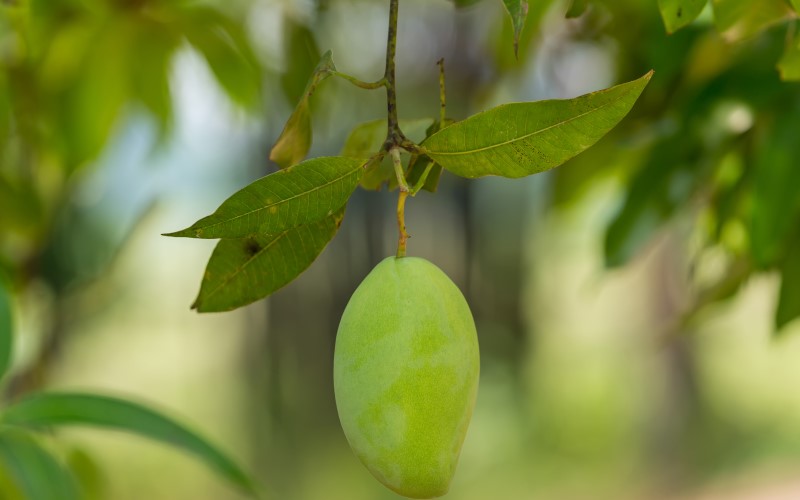
With the beginning of April, small fruits are starting to appear on mango trees. Farmers have high expectations for this year's mango production. However, sudden weather changes also pose a threat to mangoes. Mango orchards are facing an increased risk of infestation by the red-banded fruit borer, a harmful insect. If these pests are not controlled in a timely manner, they can significantly damage the entire crop. Mango cultivation is prevalent in several states, including Uttar Pradesh, Bihar, Jharkhand, Chhattisgarh, West Bengal, and Maharashtra. In these states, caution is necessary for mango growers.
Understanding the Threat: The period between March and April is a critical time for mango orchards. During this time, mango fruits begin to develop, and it becomes crucial to protect them from rain, pests, and diseases. The red-banded fruit borer is one such pest that attacks mangoes during this season. This pest causes damage to the lower part of the mango fruit. As it starts to infest the fruit, holes and tunnels develop in the lower portion of the mango. Over time, water droplets ooze from these holes, and insects enter the fruit through these openings. The liquid oozing from the fruit later solidifies like gum. Once this happens, the fruit is rendered inedible. This issue affects the quality of mangoes and can also impact other fruits. In recent days, unexpected rain in several regions of Uttar Pradesh and Bihar has led to the shedding of mangoes in orchards, causing significant losses to mango growers. Now, mango orchards are facing a threat from pests and diseases. The infestation of the red-banded fruit borer tends to increase significantly during this season, so it's essential for mango growers to remain vigilant and begin pest management in a timely manner.
Identifying the Pest: The red-banded fruit borer infestation causes holes to appear in the lower part of mango fruits. As a result, water droplets also start to exude from the fruit. Insects then enter the fruit through these openings. Mangoes can be cut open to check for the presence of red-banded fruit borer caterpillars. If preventive measures are not taken in time, this pest can spread throughout the entire orchard, causing substantial damage.
Preventing the Infestation: To prevent red-banded fruit borer infestation, the use of contact insecticides can be effective. In mango orchards, a mixture of 1.5 milliliters of Methyathion 50 EC pesticide per liter of water can be sprayed. Additionally, spraying mangoes with 0.5 milliliters of Deltamethrin 2.8 EC pesticide per liter of water can also help reduce the threat of red-banded fruit borer infestation.